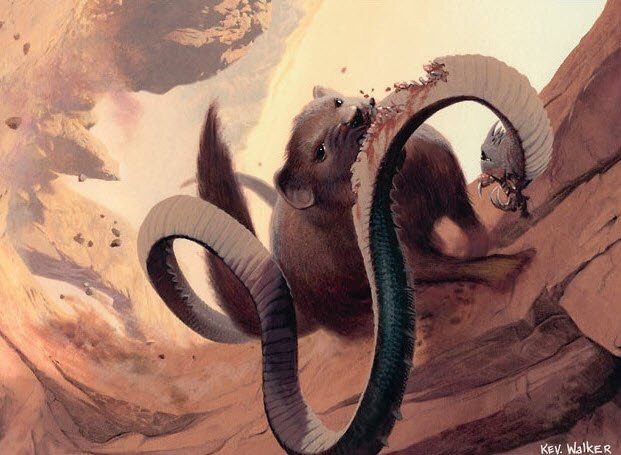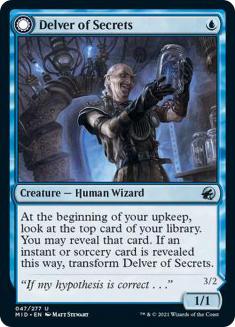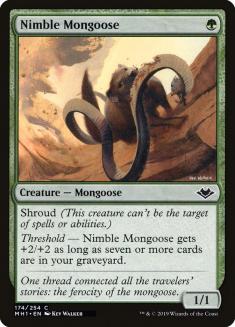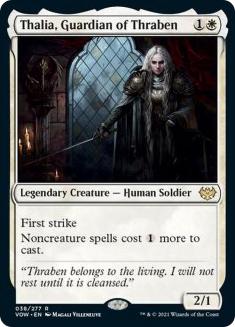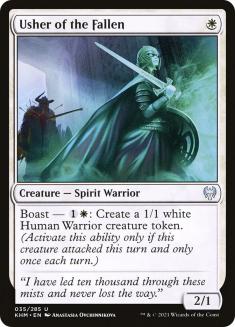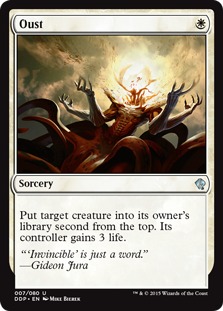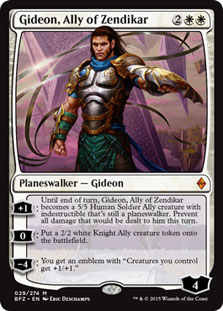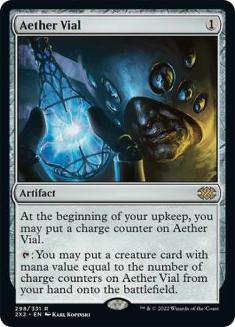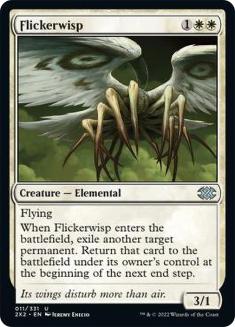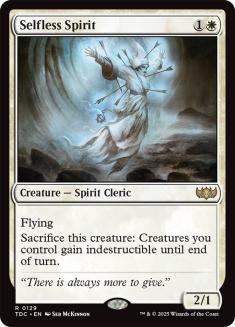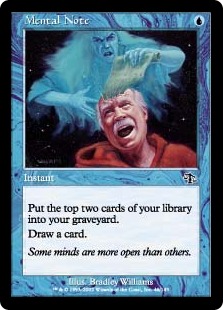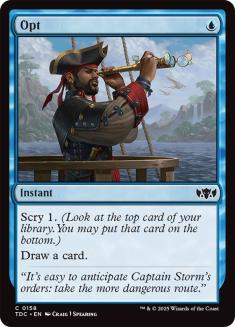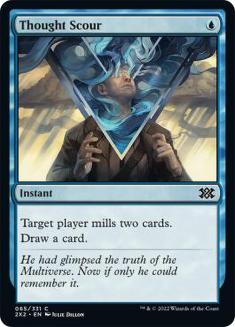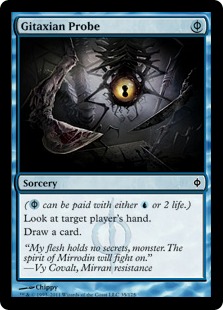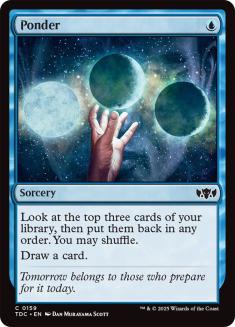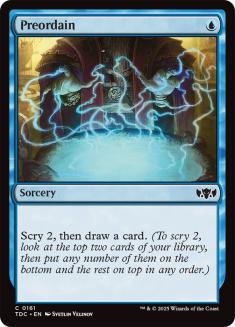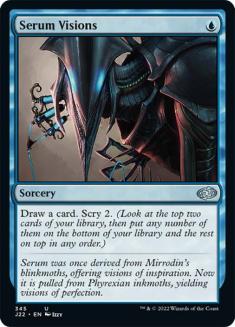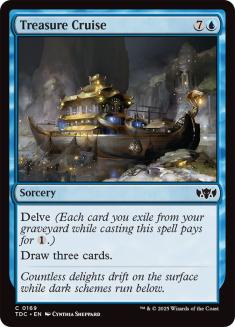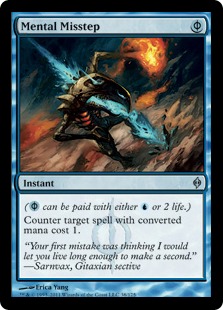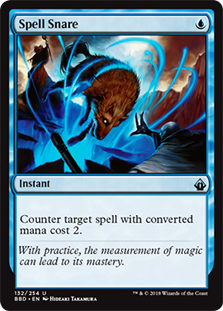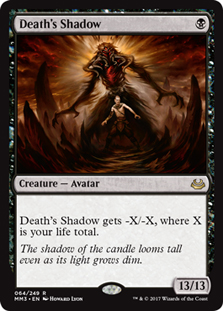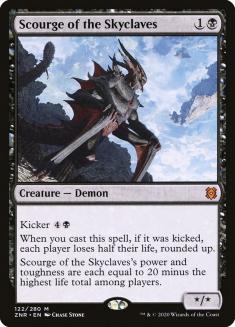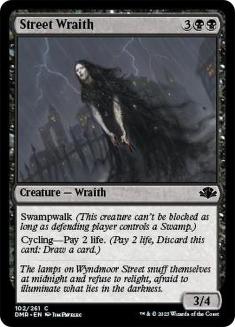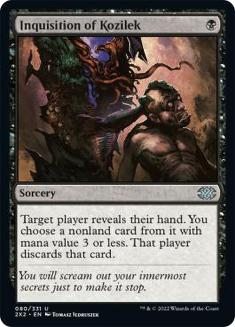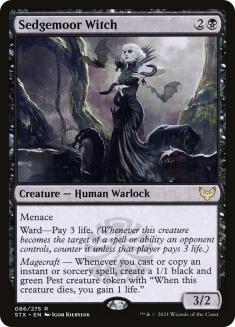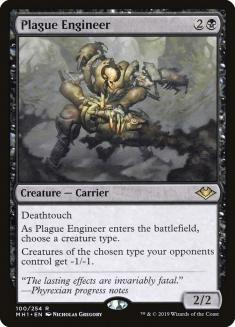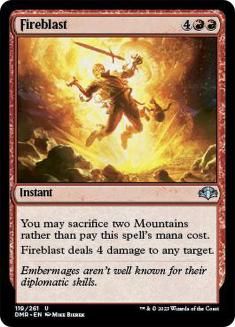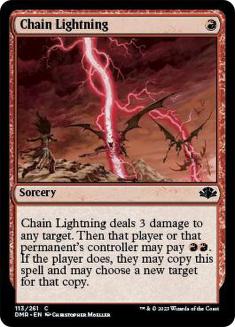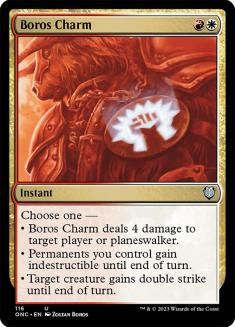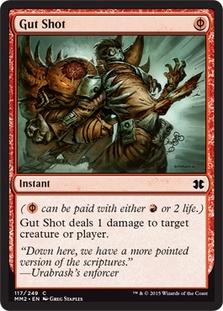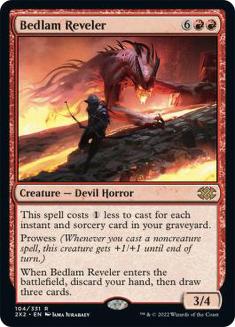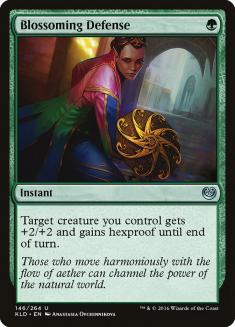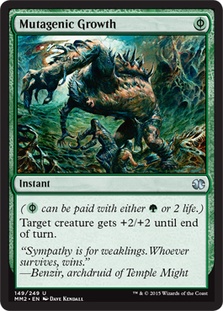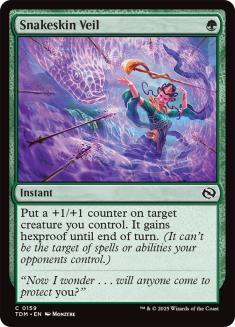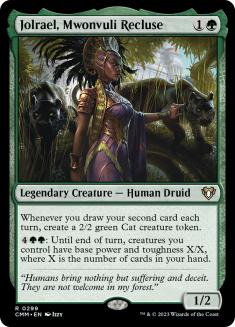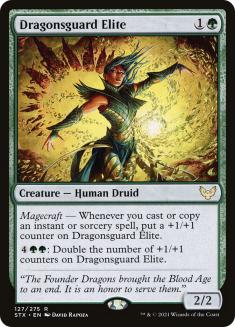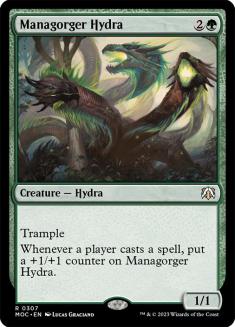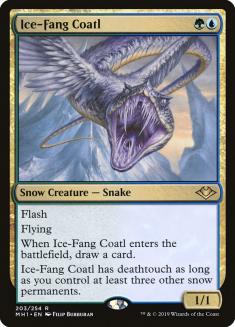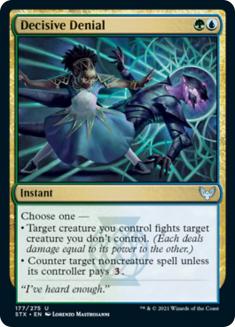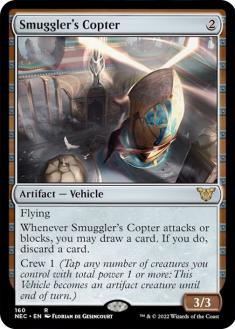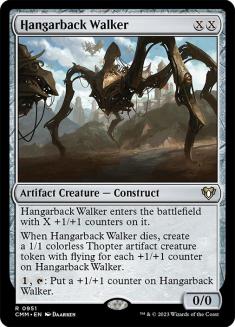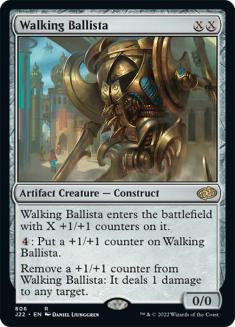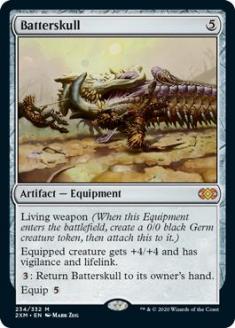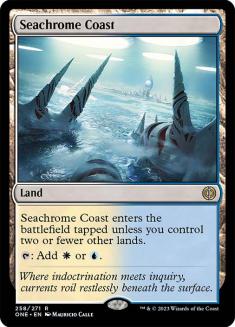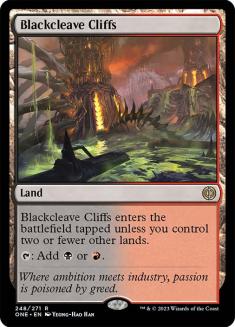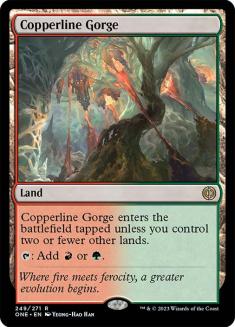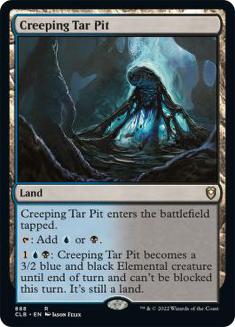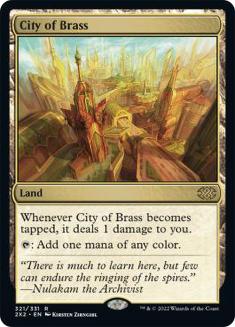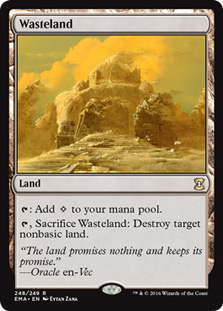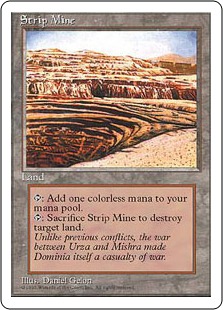Gamers, if you’ve been enjoying my Twoberts content then you’re really going to like today’s article. And if you haven’t been interested or this is your first exposure to 180-card Cubes for two to four players, then prepare to be hooked! If you’re unfamiliar with this concept or would like a refresher, then I’d check out my inaugural Twobert article to get you up to speed.
You also might be interested in my second Twobert design, which is a combo-focused scaling down of my Grixis Cube:
Now that you’re all caught up, it’s time to introduce you to my third Twobert design — the Tempo Twobert! That name alone will get some players excited, though on the other hand “tempo” is about the most misused and misunderstood term in Magic. The long and short of it is that the gameplay of the Cube is all about jockeying for position in the early-game and trying to close before your opponent can come back. Without further ado, you can find the list on Cube Cobra.
The initial idea for this Cube came from the place that many of my ideas originate — being incensed at offhand remarks from strangers. There was a week on Twitter where there was a conversation about Delver of Secrets not being a very strong Cube card as well as the common discussion of Nimble Mongoose not being good in Legacy anymore. Regardless of how true these things are, this all got me thinking that I wanted to build a Cube where Delver of Secrets and Nimble Mongoose could be respectable cards.
If I was going to succeed at this goal, first I had to isolate what causes these threats to be outclassed. You could shortsightedly say “they’re bad” but card strength is contextual and I like playing with these cards. It stands to reason that they could be made to perform well in a pool of cards that are similarly powerful, or at least care about the same things. The strength of Delver decks in Legacy is based on their ability to stop opponents from getting into the phase of the game where they could start doing more powerful things. Wasteland does a lot of the heavy lifting. That doesn’t translate directly to Cube, but it can be made to.
The first major conclusion I drew is that the mana curve of this Cube would have to be exceptionally low. While you can’t Wasteland everybody off of casting their four-drops in Cube, you can remove most of the cards that cost more than one or two mana from the card pool! This is fairly difficult for a Cube designed for eight players, but once I had the idea I never doubted that I could make it work with 180 cards.
From there a lot of the work was in trying various archetypes that played well utilizing only cheap spells and that lead to engaging games between these archetypes. The recipe always involved a spread of creatures, removal, and tricks, though the specific cards went through a few iterations. Ultimately, I drew a lot of inspiration from my favorite Constructed decks of all time, which isn’t all that surprising considering that my initial prompt was basically “2012 Temur Delver, but Cube.”
A design parameter that I had for the original Twobert was to have each color exist in the Cube as sort of a 23-card “deck,” which is to say that if you shuffled all 23 cards of a given color with seventeen of the appropriate basic lands it would play pretty well. That was good for determining that the 180-card model worked, though I’ve stepped back from that some in this design. I still have 23 cards for each color, but the mana is deliberately better and there’s a greater incentive to play more colors in a given deck.
It seems most appropriate to me to break things down by color from here, where I’ll go over the decks that inspired that color and the challenge of incorporating them into the Cube. So let’s do just that!
White
Death & Taxes and Maverick are the two decks that come to mind when I think about decks that operate on similar axes but are adversarial to Delver decks. Miracles is the other one, but incorporating that style of deck would make the draft lanes far more rigid. All the same, Monastery Mentor struck me as the exact sort of card that I wanted to have at the top of the curve for the Cube. This posed a dilemma; what was I supposed to do about Thalia, Guardian of Thraben?
Thalia seems great against almost every deck this Cube can produce, but I’d only want to play it if my deck came together in a very specific way. Thalia also didn’t seem like that fun of a play experience for this environment, so I concluded that I’d rather have white decks that can happily play Monastery Mentor than white decks that would go out of their way to play Thalia. I still incorporated some of the Death & Taxes experience with cards like Mother of Runes and Tithe Taker, but in a way that allows proactive cards like Clarion Spirit and Leonin Lightscribe to shine. This setup is, in my opinion, a lot more engaging to draft and a lot more fun to play.
From there, white is rounded out by some efficient beatdown creatures, cheap removal spells, and one of the Cube’s most expensive cards mana-wise in Gideon, Ally of Zendikar. Gideon has been a fun inclusion because trying to establish a position where you can establish and maintain Gideon is often challenging in a Cube where the average casting cost is so low, which makes the experience of playing Gideon very different from game to game. It can range from a haymaker to wildly inefficient and everywhere in-between, and that sort of thing contributes greatly to the replayability of the Cube.
Aether Vial is mostly a white card in this Cube, and is another major contributor to the Taxes decks. The alternative would be to just slot in more beatdown creatures, but the Vial shenanigans offer a lot of interesting decisions while drafting and in-game and I’ve been happy to have it around.
Despite excluding Thalia so that white played better with the other colors, white is still the color in the Cube that most commonly generates monocolor or near-monocolor decks. If anything, this reinforces my conviction in excluding Thalia, and I would also add that the white decks that do take advantage of a splash and some spells that Thalia would tax have performed better than decks that were rigidly mono-white. The best of these decks that I’ve drafted splashed blue for Ponder and Preordain, and I’m way more into that than playing Thalia.
Blue
It’s difficult to lean in on making Delver of Secrets and Nimble Mongoose good in a Cube without working to make Brainstorm awesome in that Cube, and having eleven fetchlands in a 180-card environment definitely accomplishes that. By extension, blue is unapologetically the most powerful color in this Cube. The fetches and shocklands make the mana good enough that access to blue is pretty easy to come by, which helps spin this into a positive if you like gameplay with a lot of cantrips, but it’s also worth noting that if you try to play a Rakdos deck you’re likely to have a bad time.
A lot of 540-card Cubes don’t have as many cantrips as this Twobert, and these cards heavily influence the environment. It can be difficult to recover once you fall behind in this Cube, so making sure you find your threats and answers on time is very important. I’ll also add that Thought Scour and Mental Note punch way above their weight class in this environment given that the Cube features a high volume of cards that care about having cards in your graveyard. Perhaps the most significant of these cards is Treasure Cruise.
I didn’t start with Treasure Cruise in the Cube because I was concerned that it would be too good, but after playing a bunch of games I found that I wanted more cards that would allow a player to come back after running out of resources. Now, sometimes Treasure Cruise does the exact opposite of that, but it’s a sweet card and Treasure Cruise Modern was a high point in the history of Constructed Magic for me.
Additionally, the card’s presence in the Cube makes playing Delver of Secrets more appealing. Delver has this problem where it dies to everything, but it’s a solid threat when it sticks around and including some cards that can somehow benefit from having the Delver in your graveyard after it dies increases the card’s playability. Delver isn’t doing the heavy lifting in the Treasure Cruise decks, but it is typically making the maindeck, which I consider a win.
The other quirky thing that blue brings to the table in the Tempo Twobert is a selection of counterspells that you wouldn’t typically see in Cube. Mental Misstep unsurprisingly gets first-picked often given the high volume of one-drops in the Cube, and I’m giddy about having Spell Snare in a Cube. Spell Snare and Delver of Secrets were my go-tos in Modern for a long time, so that’s a nice bit of nostalgia for me. Spellstutter Sprite isn’t quite on the level of the other two cards here, but it is one that I always find myself stressing out about playing around because it’s such a beating when it counters your spell. Bitterblossom was in the Cube for a while, though it performed pretty poorly in a field of creatures that could freely attack into it and Spellstutter Sprite was still value added to the Cube without it.
With a lot of the inspiration for this Cube being an old Legacy deck, it might look odd that Force of Will is absent from the list. This has become much less true as they’ve printed more individual cards that can win games on their own into Legacy, but back in my day Force of Will was the first card that you sideboarded out in most fair matchups. Most of what’s going on in this Cube is just one-for-one stuff, and a self-inflicted one-for-two is very punishing. Five mana is also a huge ask in this Cube, and while there are a few cards that it would be nice to Force of Will, there are far more cards that will make you regret drafting it.
I’ve done more four-player drafts with this Cube than two-player drafts at this point, and it’s not uncommon for at least three players to be playing some amount of blue. Going back to the notion that the Tempo Twobert is “2012 Temur Delver, but Cube” though, I’d say that this is both unavoidable and desirable. Every card in the Cube is still happily showing up in some percentage of decks, and I consider that a very good place to be.
Black
Now we get to perhaps my favorite part of the Cube. I may have started by thinking about Delver and Nimble Mongoose, but in fleshing out the design I saw an opportunity to cross an item off of my Cube bucket list and I pounced.
I always had fetchlands in the Cube, but the first list that I drew up had original duals. It didn’t take much to realize that this made manabases completely absurd in a 180-card Cube, so I swapped those out for shocklands and had the epiphany that this doesn’t need to just be a drawback to good mana; it could also be support for a Death’s Shadow strategy.
Death’s Shadow is something that I’ve messed around with a ton in Modern, and it always seemed overly ambitious to try to make it work in an eight-player Cube. Shocklands, Phyrexian mana, and a handful of other ways to pay life as a cost have made the deck an awesome feature of the Tempo Twobert. Not to mention that every deck in the Cube is at least somewhat aggressive, which means that both players will typically be working to turn on your Shadow. This makes for some very engaging games that are reminiscent of the Shadow VS Burn matchup in Constructed… more on that shortly.
Targeted discard has performed very well in this Cube with most of the cards being one-for-ones, and Sedgemoor Witch has been a knockout. The threats and interaction in black have both been generally excellent, and black is a very serious contender.
Before we move on to red, I would be remiss if I didn’t offer a justification for Plague Engineer. I have been critical of the card showing up in other Cubes because the play patterns are often quite bad. For the purpose of this Cube though, the creature types are diverse enough that Plague Engineer doesn’t really shut down any style of deck, and is mostly a failsafe against the token-making creatures. Monastery Mentor, Sedgemoor Witch, and Young Pyromancer all lead to absolutely runaway games on occasion, and Plague Engineer largely serves as a check against them and an otherwise fine card in a Cube that involves a lot of attacking and blocking.
I imagine there will be a nonzero number of games ruined by a Plague Engineer on Human, but to that end the card is also a safety valve against Mother of Runes and Sylvan Safekeeper. I also miss hitting Lingering Souls players with Sulfur Elemental, and this is as close as I can justify in Cube. This is all to say that I’ll be keeping an eye on the card, but I do like that it’s generally at it’s best against a very powerful range of cards and that it won’t often be lights-out.
Red
You’d better believe that Monastery Swiftspear and Soul-Scar Mage were the first two red cards that I added to this Cube. Getting to really focus in and make Prowess a consistently draftable archetype makes me very happy, and I’ve also wanted to have something that resembles a Constructed Burn deck in the spread as well. This is another Cube where I tried Goblin Guide and it sucked because of all of the blocking going on, but that doesn’t detract from the rest of the Burn support.
Boros Charm isn’t often good even when it shows up in Cubes, but it’s one that I’ve held onto from my initial design for the Tempo Twobert. Having a few great Burn spells reinforces that the mana isn’t free here, and it’s fun to have Boros Charm around because it doesn’t always show up but it is a huge deal in the matchups where it matters.
This is one of the features of the Cube that makes playing with and against the Death’s Shadow decks really complex and engaging, and we’ve played a lot of sweet games. I’ll also point out here that all of these burn spells are the reason that Faith’s Shield made the cut in the Cube over Apostle’s Blessing, because at some point it’s preferable to have a “counterspell” that protects your life total from burn spells as opposed to just loading up on ways to pay life.
Gut Shot is another card that I’m personally very excited about. It doesn’t fit the mold for most Cubes, but it’s a pretty high pick here considering how many creatures it kills and the fact that it can go into any deck. Cube design is ultimately largely about self-expression, and the fact that the 180-card model allows a bunch of cards that normally aren’t appropriate for Cube Draft shine is one of my favorite things about Twoberts.
On that note, this environment is by far the best fit I’ve ever seen for Bedlam Reveler in Cube. It’s easier to get the requisite instants and sorceries in your graveyard than usual and the card is also higher-impact when it comes online. I also really like the tension that Bedlam Reveler has with Treasure Cruise and some other powerful cards in the Cube that care about graveyards. You can’t just play all of them in the same deck and expect things to go consistently smoothly. These are among the most powerful cards in the Cube and the tension that they have with each other is a big factor in the Cube’s balance, as this tends to result in these cards being spread among all of the drafters instead of all ending up in the same deck.
Even with the push for a Burn deck, red has still shown up in the Tempo Twobert in myriad archetypes. We’ve drafted various flavors of Izzet, Jund Midrange and Delirium, Grixis Control, and all kinds of four-color decks. The versatility of burn spells in this environment and the fact that they tend to remain live into the late-game are major factors in the Cube’s replayability.
Green
And now it’s time to answer the question of what green cards pair well with Nimble Mongoose. Tarmogofy was a no-brainer, and Abundant Harvest is maybe the green Cube card these days, but what else? The green column has probably gone through more iterations than any other color, and the answer that I’ve settled on is scalable, resilient threats.
Delirium is something that I’ve worked with before in Cube, and it seemed to fit pretty naturally along with a bunch of other things that cared about graveyards. Green also just doesn’t have that many spells that do anything other than generate mana, and the delirium theme opened up Traverse the Ulvenwald, which is great when supported.
Finding the right balance on protection spells for the Cube was a bit of a struggle, as there are diminishing returns on this sort of thing. Blossoming Defense has always been good to have around, but previous iterations also featured Vines of Vastwood and it was just overkill on that sort of thing. I was okay being a little heavier on those spells when Berserk was in the Cube, but that unfortunately was a failed experiment. I thought it would be a cool removal spell / finisher for Death’s Shadow decks, but it generally just invited disaster to whoever tried to play it.
At this point the Cube includes every appropriate efficient and sweet green spell that I’ve been able to come up with and a cast of creatures that scale based on somewhat varied incentives. I like where green has landed, and I’m also happy to report that Nimble Mongoose’s shroud makes it a very relevant threat in this environment. I’ve gone the distance with Nimble Mongoose more than once already, and I’ll do it again!
Gold
The gold section of this Cube is a little funky, and some of the blame for this falls on Stoneforge Mystic. The potential card pool for white isn’t much deeper than what is already in the Cube, and I waffled quite a bit on whether to include Stoneforge and a couple of Equipment. I was a bit concerned that Umezawa’s Jitte would be too powerful, but it was evocative of the formats that I was trying to capture in the Cube, so I gave it a shot and the lead-up to trying to equip a Jitte has been tense and enjoyable in the games I’ve played, so it has stayed in. The consequence of this is that there are more artifacts in this Cube than there are in the original Twobert, which means fewer slots for gold cards.
I landed on a solution that isn’t exactly balanced for color, but contributes to the Cube’s general color flexibility. After adding two cards for every two-color pair, I added five hybrid cards so that specific combinations weren’t necessarily given preferential treatment. As I’ve played more with the Cube, a couple more slots have become hybrid or split cards to add appropriately exciting options, but that was the starting point anyway. This idea made it easy to fit in Deathrite Shaman and Lurrus of the Dream-Den, which are both problematically powerful for Constructed but play well here and capture the right feel of the Constructed decks I’m drawing inspiration from in an exciting but not oppressive way.
Most of the color pairs have been pretty easy to work with, but Simic has been the problem child of the lot. Ice-Fang Coatl has been in the list from the beginning and is the reason that I use snow-covered basics for the Cube, but the second Simic slot has been difficult to nail down. I started with Oko, Thief of Crowns because the card is at its weakest against opponents curving out, and amusingly Oko proved beatable when it showed up early but was generally an unbeatable topdeck. I also hated seeing it in packs, so that include didn’t last long.
While I thought about Uro, Titan of Nature’s Wrath, that card is at least comparably contemptible, and I just can’t bring myself to it. Decisive Denial is neat, but I don’t feel strongly about it one way or the other. Rogue Refiner was in for a while and was fine, but just not exciting. I assume the card that finds a permanent home here has not been printed yet.
The gold cards in the Cube matter and can have significant impact on how you draft your deck, but they aren’t just a list of the most powerful cards in the Cube. Generally speaking, this is my aim for the gold section of any Cube and I’ve liked the selection here.
Artifacts
I’ve mentioned or alluded to most of the artifacts in previous sections, with a couple of Equipment for Stoneforge Mystic and delirium support accounting for most of the cards. Mishra’s Bauble is a card that has gained a good amount of Cube traction lately, and one that I’ve played a good amount with myself, but going to Urza’s Bauble for prowess and delirium shenanigans is a cool new one for me.
Walking Ballista is a go-to for me just as a powerful artifact for any Cube, and it also contributes to Delirium decks in a significant way. Hangarback Walker I was a little more skeptical about, but it actually makes maindecks a surprising amount of the time simply as a resilient threat in a field that is heavily saturated with removal. I mentioned my reluctance to include Umezawa’s Jitte previously, but Smuggler’s Copter has actually been the standout for the styles of decks that would play a Jitte. Crewing for zero mana is just a lot easier to get away with than equipping for two when all of the cards care about tempo. I like what both cards add to the format; that’s just an observation that amuses me.
Last, and perhaps least, we have Batterskull. This is another card that generates a lot of tension because it’s very powerful if you can untap with it but that goal can be quite difficult to accomplish. I imagine Batterskull will remain in the Cube for as long as Stoneforge Mystic does, and I like that these cards have varied impact from game to game. They might be removed immediately, you might be able to win with them alone, and sometimes they serve the purpose of running your opponent out of relevant resources. Batterskull also makes non-white decks from time to time, and is a solid sideboard option as well. I’m somewhat wary because I worry that these cards read as more powerful than they are, but I don’t have a better fit ready to go and I like them well enough as is.
Lands
Fetches and shocklands are at the core of this Cube’s identity, but they’re not the only lands present here. Honestly, I was expecting Modern Horizons 2 to finish out the Horizon land cycle, but I’m sad to report this isn’t the case. All five enemy Horizon lands are in the Cube along with Horizon Canopy, but the other four color pairs don’t have that luxury.
Fastlands are generally the next best option, but when I look at the blue and black spells I don’t see as much of an incentive to play an untapped dual. Death’s Shadow is slow to come online and blue only has so many early threats. I’ve registered Creeping Tar Pit quite a lot in the past and I like what it adds to the Cube more than Darkslick Shores and it’s the most relevant of the creature-lands for the Cube broadly. For symmetry’s sake I could see shifting to all fastlands or splitting all allied fastlands and all enemy Horizon lands, but the split that I have fits the decks that the Cube generates best in my experience. Ideally, there would just be ten Horizon lands, but alas. Some people just proxy up the missing cards from incomplete cycles, but that’s not my style.
That leaves just one more slot to discuss. I’ve liked Death’s Shadow in the Cube, and the four- or five-color decks that show up tend to be focused around specific things like Ddelirium or magecraft, and as such an extra land that encourages these things is good to have around. My original build of the Cube featured Wasteland and Strip Mine, but over time they proved to be a bad fit.
I was somewhat concerned that Strip Mine might be too powerful, but the opposite proved to be true. The spells in the deck are just too efficient for a Wasteland to matter in most games. I had some stuff like Wrenn and Six in for Strip Mine locks and while Wrenn was good for killing creatures, the mana denial strategy just wasn’t ever effective. I really enjoyed watching that play out, so I’m glad that I tried those cards and that they ended up being a learning experience for me. It’s always good to push boundaries in Cube design, because things don’t always work out the way you would expect them to.
The gameplay of the Tempo Twobert has hit a ton of nostalgic notes for me as well as providing cool new interactions and play experiences. The four-player Draft environment with each player drafting five nine-card packs has been a rousing success with my friends, and I hope that this article either got you excited about trying this design out or working on your own Twobert if you weren’t already there. These have been the most fun I’ve had playing Magic in years, and it’s been so rewarding for me to see and hear from other people enjoying them as much as I have.

